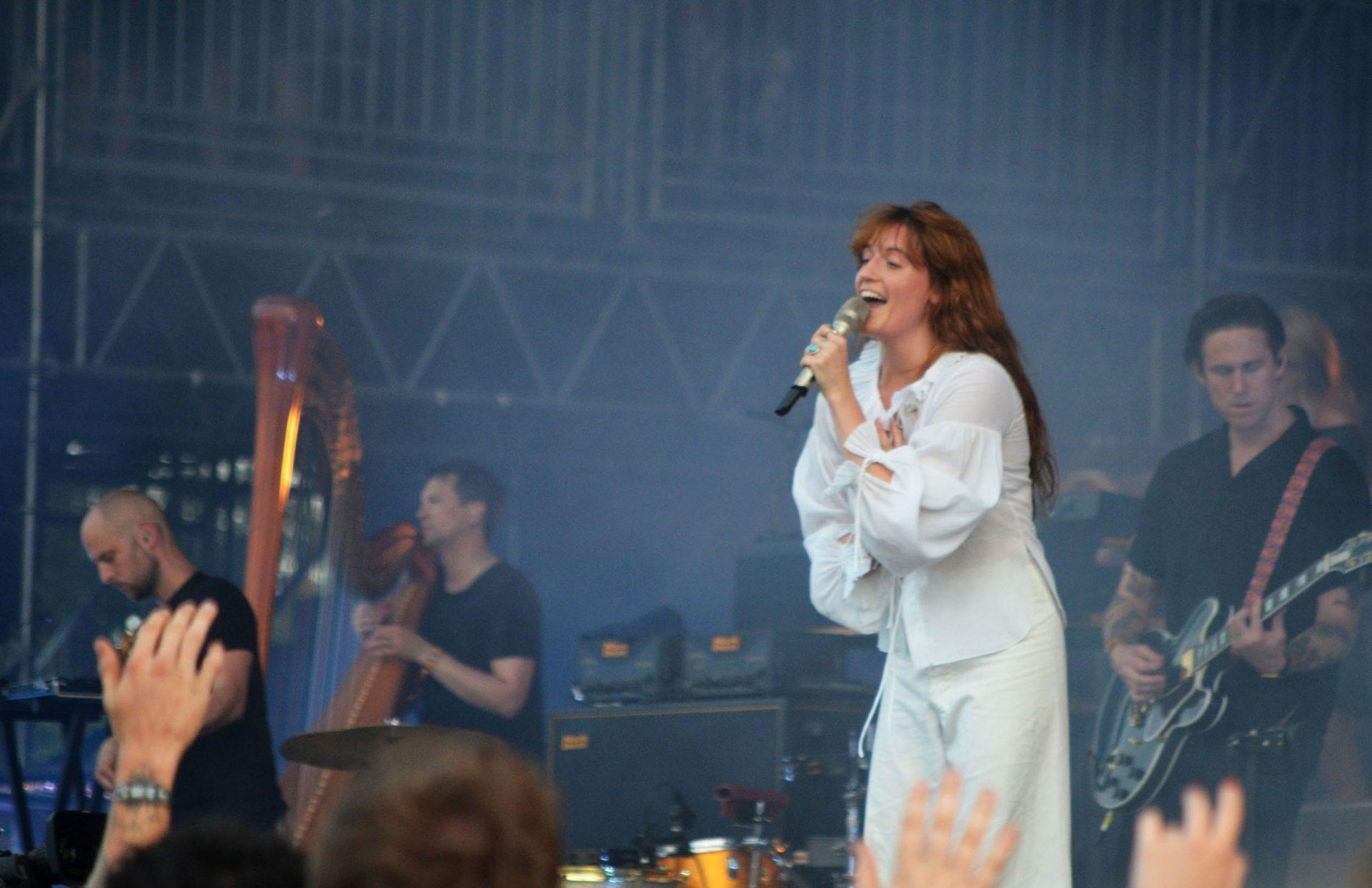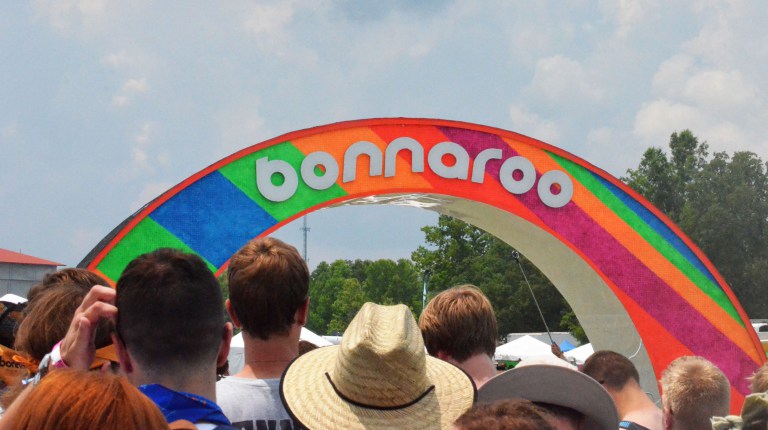Narrative and photos by Laney Ruckstuhl, Interim Editor-in-Chief
July 6, 2015
Day 1: Wednesday, June 10
After a giant plate of eggs, grits and fresh fruit and at least three cups of coffee provided by my aunt and uncle and one last, sweet shower in Tullahoma, Tennessee, we were ready to go.
My friend Rachel Smith, a reporter for North Carolina State University’s student newspaper, “The Technician,” and I took a back route to the county convention center and waited a couple hours to pick up our press passes. Way too early, we sat outside the building eating peanut butter sandwiches and trying to scope out any artists who may be checking in at the convention center as well.
Around 4:30 p.m., we moved inside to stand in line with a bunch of fellow journalists, anxious and excited for what was to come. After the green “media” wristbands were finally slapped on to our wrists, Rachel and I hit the road toward Highway 55 that would take us to the infamous Farm.
Approaching the farm, a line of cars crawled up the highway, waiting to be searched and enter. We blasted the playlist that I made, filled with the artists we wanted to see all weekend.
Once our car was searched, we were put into another line of traffic, but my patience was restored as I caught my first glimpses of the Farm. We could see thousands of tents set up in neat rows, lined with tapestries, flags, tie-dye and Christmas lights. An endless loop of rainbow-colored gradient lead us forward and separated the festival and campgrounds.
My heart fluttered as I saw the famous ferris wheel, and finally, the Bonnaroo arch. It was what I imagined it must be like to see the Eiffel Tower in the middle of Paris or Times Square for the first time, though I have yet to travel to either.
Our tent neighbors on the left said they waited approximately 8 hours in line for a camp site after having their cars searched and entering the Farm. However, we sat in traffic for about an hour before setting up at camp around 8 p.m., with just enough sunlight left to see what we were doing.
We quickly set up the tent we brought in addition to a couple of folding chairs, coolers and little else.
Sites were not marked and space was not provided individually marked off. Rather, you were expected to shove as much as you could fit into the plot of grass beside your car, parked parallel to where you’d live the next four days.
We met our tent neighbors on the right side, four college guys who attend North Carolina schools – three going to NCSU and one from UNC-Chapel Hill. We also met a 30-year-old woman from Atlanta who was staying to our left.
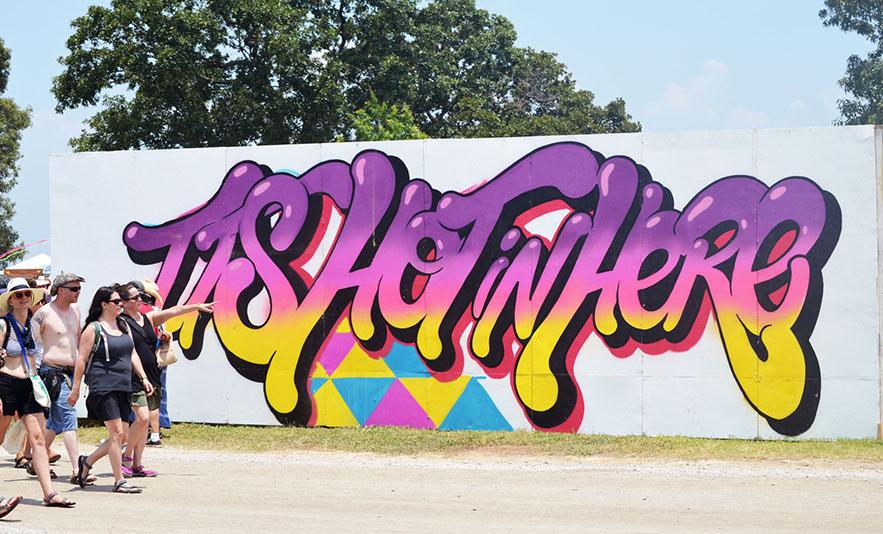
Many of our fellow “Roovians,” or Bonnaroo attendees, seemed to be veterans. A group of twenty-something Tennessee natives across from us said they had attended several years in a row. Three people in the group even had the festival’s logo tattooed on their bodies.
Everyone was there for the same reasons: to enjoy music and have the best time of their lives.
We watched as our neighbors made elaborate set-ups of canopies and beer pong tables, feeling slightly underprepared.
As the sun went down, we noticed lanterns glowing in the sky and realized they were being lit nearby. We wandered over to attempt to light some of our own, but the small group was quickly dispersed by a security guard. It was unsafe and we could light tents on fire, she screamed.
Rachel and I heard the sound of drumming and rushed toward a crowd of people gathered by the port-a-johns in a makeshift drum circle. We were greeted with high fives and chanting, while a person with a megaphone screamed, “BONNAROO 2015” and “FUCK YEAH, ROO!”
I was told before coming that there was a sense of community on the Farm; I had my first taste when Rachel and I left the circle to walk around the festival. We were high-fiving everyone in sight and met total strangers friendlier than anyone in the outside world.
Soon, we found ourselves joining people parading for no other reason than to parade. We ran through rows and rows of tents, screaming “parade!” for a while, until Rachel and I fell down laughing on a patch of grass as the rest of the group went on. We would hear the word “parade” fading into the distance for the rest of the night, getting further away, but noticeably louder.
The feeling of camaraderie I felt can be compared to little else I’ve experienced – like the first day of college orientation, when scared freshman scramble to make new friends as a way of survival. Except this time, no one seemed to have a motive. Everyone was there for the same reasons: to enjoy music and have the best time of their lives. That was enough to bond us together.
Day 2: Thursday, June 11
I woke up on the first day of Bonnaroo the way I would the rest of the festival: sweating so much I could hardly breathe, sticking to my sleeping bag.
I immediately crawled out of my sauna of a tent, and realized that Rachel threw a tarp over our tent in case it rained overnight. I proceeded to yell at her for it, the heat almost angering me.
We rushed to Centeroo – the main grounds where the bulk of the festival happens – before it opened at noon. We stood in a giant line of more high-fives (What else?) and made our way through the infamous rainbow-colored arch.
Almost immediately after entering, a light rain began to fall. It felt refreshing in the Tennessee sun.
“Rachel,” I said. “We’re at Bonnaroo.”
We spent the next few hours wandering through merchandise tents and advocacy booths for everything from global warming to social justice — trying to score free stickers and buttons.
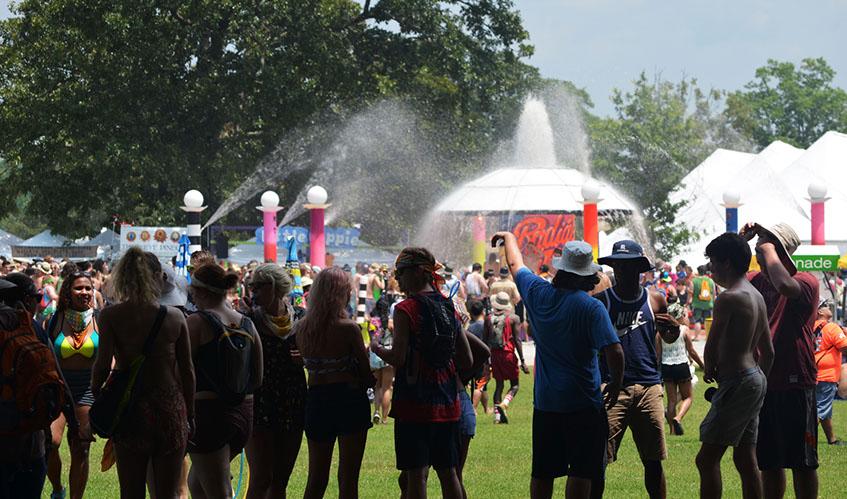
The three tents –This Tent, That Tent and The Other Tent – and The Who Stage were open that day for performances.
The names confused me and so did the layout. Luckily, Rachel seemed to have no problem navigating her way around the festival after just a couple of hours, pulling me along. I would only grow more confused the following day when the two larger stages – What Stage and Which Stage – were opened and introduced to the mix.
It wasn’t until that evening that the music began. Our first show was at 7 p.m., when we saw Strand of Oaks under This Tent.
We stood in a crowd of people, waiting for the band to come on stage, but before they finished the first song of the set, a young man in the crowd collapsed to the ground, just a few feet from where we were standing. A group formed around him, dropping to their knees and a girl screamed, “He’s not breathing!”
People in the area and I began shouting and motioning, “medic” as several people attempted to resuscitate the man.
Finally, he stood, and was taken out of the crowd.
While this was happening, the band went on playing and though many in the crowd appeared to be just as shaken as I was, they went on singing and smoking weed, though I remained distracted.
Throughout the performance, the lead singer, Timothy Showalter, repeatedly expressed his love for the fans. He called us “the best crowd he’d ever played for,” and finished the show by body surfing through the crowd and back to the stage.
All I could think was, “so, this is Bonnaroo.”
The remainder of the day — and weekend, for that matter — would go much the same: people passing out, artists saying they’d never played for a more energetic crowd, lots of people doing drugs and unexpected, crazy finishes to shows — until it all felt normal.
Later that night, we returned to the same tent to see Courtney Barnett where we got stuck in a head banging mosh pit and then Mac Demarco, who asked the crowd to get onto each other’s shoulders.
Standing next to the artist’s pit during Mac Demarco– where musicians, their crews and official photographers were given space – would turn out to be a stroke of luck. The man beside me, who I later found out was Demarco’s personal photographer, asked me if I wanted to get on his shoulders. After a moment of hesitation, I said yes, thinking of the excellent photos I could snag with an aerial view and the promise I’d made to myself to take every opportunity that weekend.
I snapped my photos from the air, lights shining in my eyes and balloons with strange faces drawn on them flying around me.
When I was returned to the ground, I put down the camera and enjoyed the rest of the show from the pit, trying to be cool despite the knowledge that I was probably surrounded by famous people – or at least people who hung out with famous people.
We wandered back to our campsite around 2 a.m., realizing we’d been in Centeroo for over 14 hours, our feet aching though it was only the first day. I collapsed into my tent and fell asleep almost immediately, wondering how I’d survive the next three days.
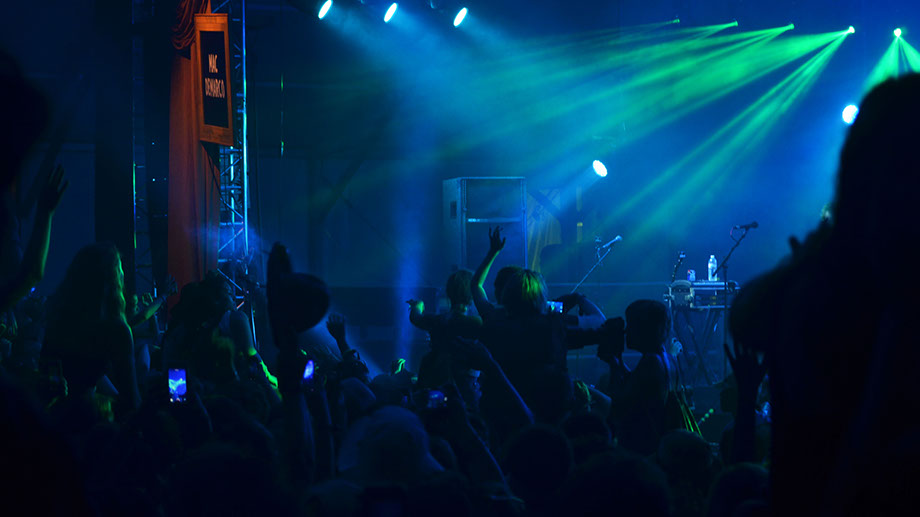
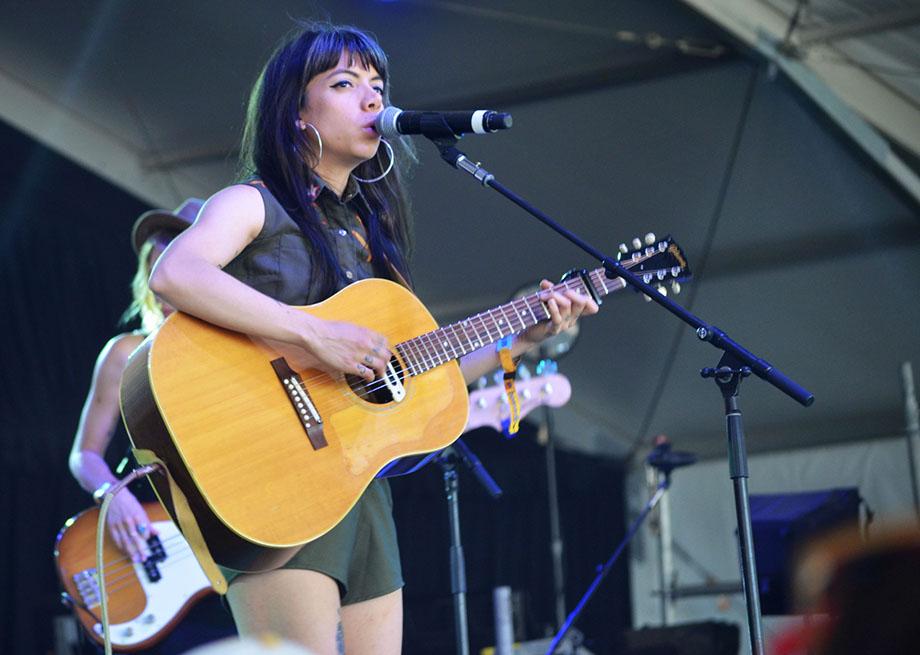
Day 3: Friday, June 12
I was woken up at 4:30 a.m. by the sound of EDM music blasting from the campsite beside me. I rolled over, grunting, to see if Rachel was awake, but she was knocked out cold.
I could barely hear her still snoring over the sound as I scrambled for earplugs, which I knew were somewhere in my tent. But when I found them, they gave me little relief as the vibrations of bass felt like an earthquake.
Somehow, I was exhausted enough to drift back to sleep for a few more hours. Then, I woke up drenched in sweat again to the sound of our neighbors’ conversation, which explained the music.
“I tripped balls last night,” I heard a voice say. “I was rolling so hard that it took me four hours to find my way back to our campsite.”
I laughed to myself as they discussed whether it was the fact that he had eaten four psychedelic mushrooms or the number of shots he had taken, in addition to some other drugs he had done earlier in the day. I prayed silently I would make it through the day we had lined up with so little sleep.
Another camper joined us that day, my friend and fellow reporter for The Appalachian Lola Benfield. She drove seven hours down to the Farm when I learned upon arrival that as a member of the press, I was allowed to bring a guest who would also be given a press band.
Although she was placed in a campsite a couple miles from ours, she eventually found a golf cart shuttle, loaded up her belongings and made her way to us.
The three of us then made our way to Centeroo around 3 p.m., just in time to see SOJA on the What Stage. We danced to reggae and took photos, the crowds seeming much bigger than they had been the day before now that the larger stages were open. We went to a couple smaller shows until making our way back to the What Stage to wait for Alabama Shakes.
When they took the stage, Brittany Howard’s voice seemed to shake the world as they performed. The third song they played was “Always Alright,” a song to which Lola and I had spent many nights dancing in my apartment to and days belting out while we drove around aimlessly.
Lola and I looked at each other as we laughed and screamed every word.
Brittany stood somewhat still but strong center stage, playing new and old favorites. She was soulful and emotional, twisting up her face while she sang, every word coming from deep within, as the crowd sang along and the sun set behind us.
When they finished their set, we all agreed it was the best band we’d ever seen perform and wondered if anyone could top them for the remainder of the festival.
Then, the crowd began to push forward, anticipating Kendrick Lamar. People pushed us so far forward that we were packed like sardines, until I was unable to move my arms and thought I’d be separated from my friends and maybe even have a panic attack.
We stood like this for an hour. I had to put my arms into the air to feel any kind of breeze and keep from screaming at the people beside me, as two backpacks hit me in the face and shoulders from different sides and the man beside me sweated profusely, leaking onto my own skin.
The only relief we received was from a security guard who began passing water bottles into the crowd, which were shared among strangers and many spewed through the air as I shielded the Nikon I had around my neck.
“It will be worth it,” I told myself, repeatedly.
And it was. Lamar played for an hour and 45 minutes, calling the show “a party,” and hyping up the crowd, running back and forth and encouraging people to jump and scream, while he spit poetic verses from the stage, both new and old.
I rapped along and jumped up and down, light blinding me and hands hitting me in the face. I couldn’t manage to get any decent photos, the crowd was too rowdy.
When the show ended, we weren’t able to walk, again, trapped in a sea of thousands of people all moving away from the stage and getting nowhere. But someone in the crowd started chanting “We gon’ be alright,” as Lamar had.
We laid by the tent Run the Jewels performed in and then the Which Stage where Earth, Wind and Fire were performing. But during both, I got up and ran into the crowd at increments when Run the Jewels played my favorite of their songs and Earth, Wind and Fire brought Kendrick and Chance the Rapper on stage with them for a guest appearance.
I knew I was sleep deprived and probably dehydrated, but I felt more awake as I ran into the crowds, the people in front of each stage still full of energy.
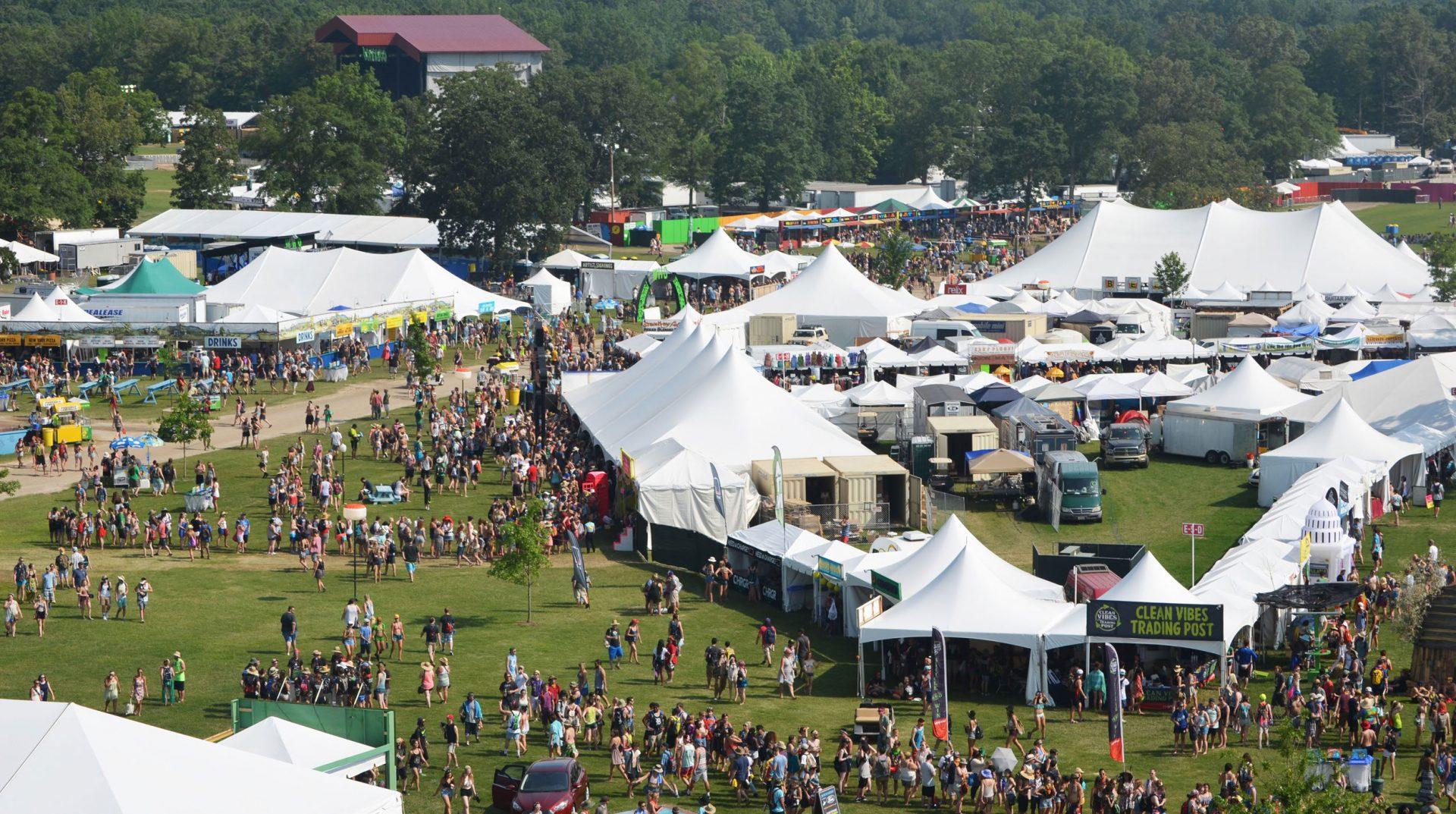
Day 4: Saturday, June 13
Saturday was the most packed day we had scheduled, running from tent to tent and stage to stage.
We started the day with Gregory Alan Isakov and Trampled by Turtles, with our feet already aching. In total, we’d see nine different shows that day, though not all in full, as this would have been impossible.
The day felt like a blur. Standing in a crowd between Gary Clark Jr. and Childish Gambino’s sets just as packed as pre-Kendrick had been, we yelled, “Going DOWN!”
We plopped ourselves into the dirt in the middle of thousands of people, surprised that we’d been successful as the guys behind us told everyone we were on a “time-out” and to back up.
It smelled awful down there — sweaty legs, stinky feet and the grime of hundreds of people who probably hadn’t showered in days. But it was dark and quiet and gave our feet relief until Gambino took the stage, when he gave me energy to get me through the rest of the night.
Lola laughed at me as I rapped along to almost every word Donald Glover spit on stage, with the exception of a couple new tracks he decided to drop then and there.
After Gambino’s show, we regrouped in the press tent, a space that was exciting simply for the fact that we were surrounded by big time journalists and smaller artists, doing interviews throughout the week. But mainly, we went there to get free water as needed and enjoy some cool air.
Dehydrated and short of breath, we opened the cooler to discover it was empty.
A young woman walked over and opened it to the same disappointment, then dunked her empty plastic water bottle in and filled it with the melted ice that remained, saying, “it’s better than dehydration, right?”
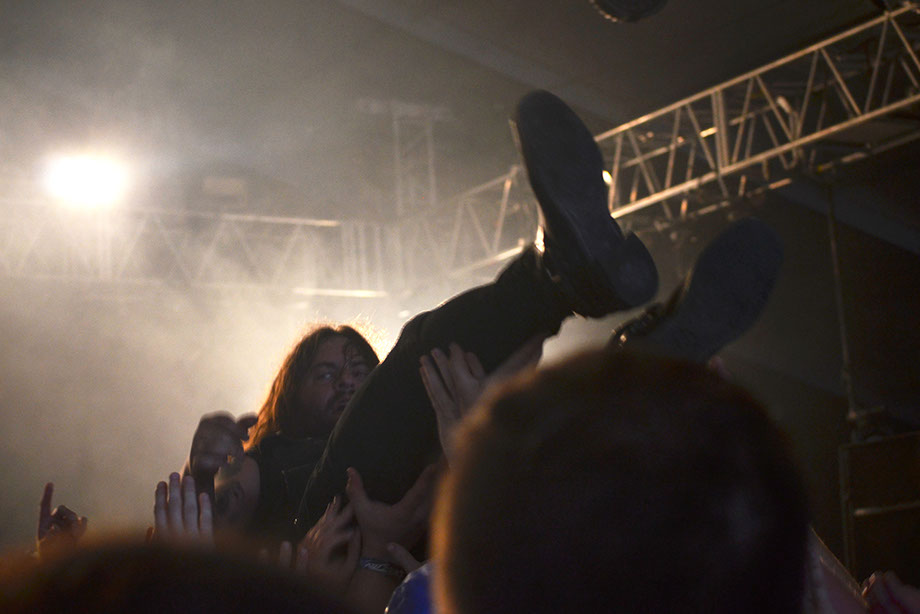
I looked at my friends, shrugged, and did the same. I poured the water down my throat, realizing it was the most unsanitary thing I’d probably ever done. But the relief of ice cold water seemed worth the millions of germs and all the diseases I could likely catch.
Lola and Rachel both took swigs, before we could really think about the reality of the hundreds of hands that had been dunking their hands in it all day. I could only hope the rest of the press was staying in hotels and had been showering and washing their hands more frequently than we had.
After a few more hours of shows, including Mumford and Sons, I looked back at Lola during the Throwback Superjam to see her eyes so wide from exhaustion that she looked as if she had seen a ghost. I began to laugh but took it seriously, realizing she too was prone to collapsing in a crowd from exhaustion.
Although the jam was incredible, beginning with Chance the Rapper and Chali 2na of Jurassic 5 covering a Biggie classic, it was time to leave.
On our walk home, Lola looked across the road and began screaming as we saw a dark shape moving. It looked like a small animal, and as we guessed at what it was– a possum, a raccoon or maybe a dog — we realized it was our own shadows moving against the fence.
Howling with laughter and tripping over our own aching feet, I realized that we were making a scene, delusional from lack of sleep. Passersby probably guessed what drugs we had been taking, but we were sober.
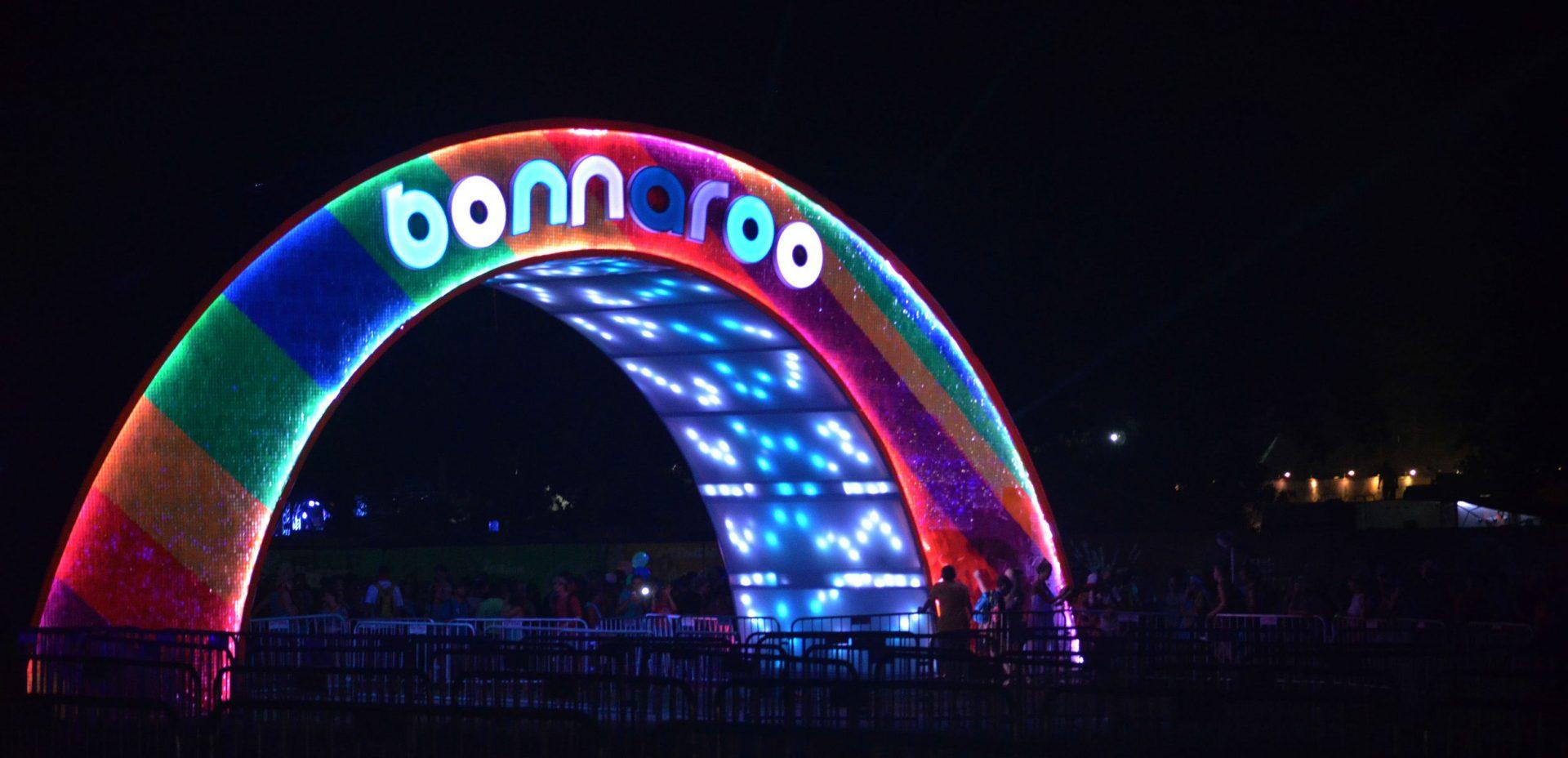
Day 5: Sunday, June 14
After days of baby wipe baths, Sunday was the day I finally caved on my lack of cleanliness. Although I still refused to pay $10 for a shower that I knew would be useless a few hours later, I woke up begging Rachel and Lola to wash my hair.
The water smelled like sulfur and I gagged in the sink from the stink, but I have never felt as clean as I did in that moment, despite how incredibly grimy and caked with dirt my body still was. I learned a few days at Bonnaroo will change your definition of the word “clean.”
We spent what I couldn’t believe was our last afternoon on the Farm at bluegrass shows that made me homesick. I felt like I just arrived but at the same time like I hadn’t seen my mountains in weeks.
The last full show we saw was one I had anticipated all week, Florence and the Machine.
Florence Welch surpassed any other artist I have ever seen, including Alabama Shakes. For me, her performance was a spiritual experience.
I have loved Florence since “The Dog Days are Over” became popular in 2010.
I felt it then, hitting me, as Florence went twirling wildly across the stage, dancing and screaming and jumping. She ran through the crowd, right up to where we were standing, at the front of general admission.
When she returned to the stage, she read out loud, “Pls be careful,” off the stage’s floor, and laughed at the suggestion.
At one point in her performance, I realized I was in tears. Although this may have been in large part due to a lack of sleep and total delusion like the night before, I have never cried during a concert before, and I’d like to chalk that up to how beautiful it was.
After Florence, we caught the tail end of the Bluegrass Superjam, where we stood outside the tent flat footing and yodeling into the night. It was our last show.
I fell back on to the grass, looking up at the stars, feeling light and weightless. Surrounded by people who looked as reluctant to leave as I felt, I realized something.
It wasn’t just the events of the festival themselves that made it special. It wasn’t just the music and the artists and the people and the lights.
I played back over the past few days in my head. It was the reason I’d seen every kind of drug you can imagine done in the middle of crowds that weekend like no one was watching; the reason we all sacrificed sleep just to see one more show when we felt like falling over; the reason there was nothing strange about high-fiving and hugging total strangers; the reason I ran toward stages alone dancing and screaming while my friends stayed back.
People around us were howling and dancing and a girl nearby, screamed, “This is fucking beautiful,” and I hugged Rachel and Lola as we realized we had to go and I understood, finally, why we didn’t want to.
It wasn’t a sense of invincibility; it was realizing you could do anything at any time without worrying about who was looking. It was the utter lack of responsibility or obligations or inhibitions. It was freedom.
Walking out of the farm as the sound of Billy Joel playing “Piano Man” grew more and more distant, Rachel, Lola and I all made a promise: we would be back. Although the four days I spent on the Farm taught me plenty, I think that promise will be kept.
